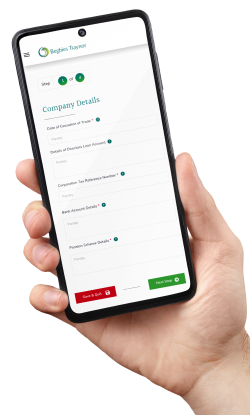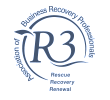Unlike a sole trader, if you want to close a small limited company, it’s not simply a case of paying off any debts, informing HMRC and shutting up shop. A limited company is a financial and legal entity in its own right, and when you want to close it, it has to be done in a certain way.
Liquidation is one of the most common ways to close a small business. Whether you want to retire, start something or close a business with unmanageable debts, liquidation is an efficient and orderly method that can reduce your tax bill and enable you to claim director redundancy pay.
Here we explain how to liquidate a small business, what the different liquidation procedures involve and when it’s an appropriate exit strategy.
Concerned about the National Insurance increase?
For the 2024-25 tax year, the rate of employer National Insurance increases from 13.8% to 15% adding yet more pressure onto already squeezed cash flows. If you are worried about the impact this could have on your company’s finances, talk to the experts at UK Liquidators. As licensed insolvency practitioners we can explain your options and help you plot a way forward. Call today on 0800 063 9262.
The most common way to exit a limited company is to sell it, but that’s not always an option. For example, your business could be in debt, there may be no one interested in buying it, or the business may not be able to continue without your specific experience or skill set. Whatever the reason, for many small business owners, liquidating the company’s assets represents the best or only feasible way to exit the business.
Liquidation is the process of turning the business’s assets into cash by selling them on the open market. The money raised is distributed among the business’s owners or used to repay its creditors (the parties it owes money to). Examples of assets that are commonly sold on liquidation include:
You must appoint a licensed Insolvency Practitioner to liquidate the business on your behalf. They will take control of the company, wind down its affairs, value and sell its assets and strike it off the official register at Companies House. At that point, it will cease to exist as a legal entity.
Liquidation Portal
For Company Directors

There are three main types of liquidation. The appropriate procedure for you will depend on your business’s circumstances.
Liquidation is not the only way to close a limited company you can’t or don’t want to sell. Company Dissolution, also called Strike Off, can be a cost-effective way to close a small business as there’s no need to appoint and pay the fees of an Insolvency Practitioner.
You can apply to dissolve your company online and manage the process yourself. If your business meets the eligibility criteria and there are no objections, the business will be struck from the Companies House register after around three months.
The catch is that you cannot dissolve a solvent company. If your business has debts it cannot pay, you must close it via one of the insolvent liquidation procedures - namely Creditors’ Voluntary Liquidation or Compulsory Liquidation.
Even if your company is solvent, if it has valuable assets then liquidating it via a Members’ Voluntary Liquidation (MVL) is likely to be more tax efficient than Strike Off. That’s because all the proceeds from an MVL are taxed as a capital gain rather than income. You may also be eligible for Business Asset Disposal Relief, which reduces the rate of Capital Gains Tax you pay.
If you were to Strike Off a solvent business, only distributions up to £25,000 are subject to Capital Gains Tax, and you pay income tax on anything over that amount at a higher rate. You’re also not eligible for Business Asset Disposal Relief.
Start your online liquidation today
If you have decided liquidation is the right option for your limited company, you can take the first step and begin the process online using our online portal. Starting the process is quick, simple, and can be done at a time that suits you. Your information will be submitted to your local UK Liquidators insolvency practitioner who will be with you every step of the way. Click here to start your company’s liquidation online.
There’s no fixed time frame for liquidation. However, it can be quite quick for small businesses with relatively few assets or creditors. It will usually take a few weeks to enter into voluntary liquidation once you have contacted an Insolvency Practitioner. From that point, a straightforward Members’ Voluntary Liquidation can take as little as three months.
A Creditors’ Voluntary Liquidation usually takes longer as the liquidator must formally request creditors submit claims and provide supporting documentation for the money they’re owed. The liquidator must also investigate the reasons for the company’s failure and the conduct of the company directors leading up to the insolvency. That means a simple CVL can take six months or more.
Compulsory Liquidation is typically the slowest of the three procedures, as you must wait for a creditor to petition the court and the court to schedule and hold a winding up hearing. Only then can the liquidation process begin. Even for small businesses, Compulsory Liquidation can take up to a year.
You must appoint an Insolvency Practitioner to liquidate the business on your behalf, and their professional fees usually make up the lion’s share of the overall costs. Other liquidation costs include third-party expenses like advertising the liquidation, valuing the assets and any legal or accounting fees. You may also have to factor in the costs of redundancy payments for employees.
Liquidation costs vary depending on the complexity of the case, the number of assets and creditors, the type of assets, and the amount of work required. However, as a rough guide for a small, simple business, you could expect to pay £2,000 to £3,000 for a Members’ Voluntary Liquidation and £3,000 to £4,000 for a Creditors’ Voluntary Liquidation.
However, these costs are usually covered by the sale of assets, so the company pays rather than you personally. If the business is insolvent, you may also be eligible for director redundancy pay. You can use that payment to cover the liquidation costs if the company does not have many assets.
If you think the time is right to close your business or you’re worried it’s insolvent, the first step is to contact an Insolvency Practitioner. They will discuss your options with you and explain the liquidation process in more detail.
Once you have all the facts, you can call a shareholders’ meeting to pass a winding up resolution. The liquidation begins when the resolution to wind up is passed. At that point, the liquidator will take control of your business and administer the procedure.
At UK Liquidators, we are the largest independent licensed Insolvency Practitioners in the UK. Please get in touch for a free, same-day consultation or to arrange a meeting at one of our 100+ local offices throughout the UK. We will assess your circumstances and advise you on your options. We can also help you liquidate your small business if it’s the most appropriate way forward.
By completing the test, you will receive:
If you are considering liquidation for your company, taking expert advice at an early stage is crucial. At UK Liquidators, our team of licensed insolvency practitioners are committed to providing limited company directors with the help and advice they need to make an informed decision.




Looking for immediate support?
Complete the below to get in touch